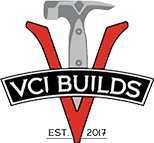Blogs

The Role of Home Builders New Construction in Your Community
Home builders play a vital role in shaping the communities we live in, transforming vacant lots into vibrant neighborhoods filled with homes, parks, and amenities. As populations grow and urban areas expand, the need for new construction becomes increasingly important. Home builders not only address housing demands but also contribute to local economies, create jobs, and enhance community aesthetics. Understanding the multifaceted impact of home builders in new construction can illuminate their crucial position in fostering community development and improving residents' quality of life.
Understanding Home Builders
Home builders are the backbone of the construction industry, responsible for creating residential properties that meet the diverse needs of families and individuals. Their role encompasses everything from the initial design and planning stages to the actual construction and finishing touches. By transforming blueprints into reality, home builders not only provide shelter but also contribute to the community’s aesthetic and functionality.
There are several types of home builders, each specializing in different aspects of construction:
Custom Builders: These builders focus on creating unique, tailored homes that reflect the specific preferences and needs of their clients. They often work closely with homeowners throughout the design process, ensuring that every detail aligns with the homeowner's vision. Custom builders are ideal for clients looking for a one-of-a-kind residence.
Production Builders: Unlike custom builders, production builders construct multiple homes based on predetermined designs and plans. They typically develop entire neighborhoods or subdivisions, offering buyers a selection of styles and layouts. This approach often leads to cost efficiencies and quicker construction times, making it a popular choice for many homebuyers.
General Contractors: While not exclusively home builders, general contractors oversee the construction process, managing subcontractors and ensuring that projects stay on schedule and within budget. They often coordinate various aspects of building, including permits, inspections, and materials procurement, acting as a vital link between homeowners and specialized tradespeople.
Economic Impact of Home Builders
Home builders significantly contribute to the economic vitality of their communities, playing a vital role in job creation and local economic development. The process of new construction not only generates direct employment opportunities but also stimulates a wide array of indirect jobs across various sectors.
Job Creation Through Construction Projects

The construction of new homes leads to the immediate creation of jobs, ranging from skilled labor to management positions. As new housing projects commence, there is a surge in demand for workers, including carpenters, electricians, plumbers, and laborers. These positions are crucial for completing projects on time and within budget, and they provide local residents with stable employment opportunities.
Direct Employment Opportunities
Direct employment opportunities arise from the construction projects themselves. Home builders often hire a diverse workforce, including project managers, architects, engineers, and tradespeople. These jobs not only offer competitive wages but also come with benefits that contribute to the overall well-being of employees and their families. Furthermore, as builders establish their companies and undertake more projects, they often expand their workforce, fostering long-term employment in the community.
Indirect Job Creation in Related Industries
The economic impact of home builders extends beyond the construction site. New construction generates a ripple effect, creating indirect jobs in related industries. Suppliers of building materials, such as lumber, concrete, and fixtures, see increased demand, leading to more jobs in manufacturing and distribution. Additionally, subcontractors specializing in roofing, landscaping, and interior design are often engaged in new construction projects, further bolstering employment in the local economy.
Contribution to Local Economies Through Taxes and Spending
Home builders contribute to local economies through taxes generated from new construction projects. Property taxes from newly constructed homes help fund essential services such as schools, public safety, and infrastructure maintenance. Moreover, the influx of residents into newly built homes leads to increased spending at local businesses, from grocery stores to restaurants, thus fueling economic growth in the community.
Increased Property Values and Investment in Community Infrastructure
The presence of new construction also positively affects property values in the surrounding area. As new homes are built, they can lead to a rise in demand for existing properties, resulting in increased property values. This phenomenon not only benefits homeowners looking to sell but also enhances the overall economic health of the community. Additionally, home builders often invest in community infrastructure, such as roads, parks, and utilities, ensuring that neighborhoods are well-equipped to support growing populations.
Enhancing Community Aesthetics and Functionality
New construction plays a pivotal role in enhancing the aesthetics and functionality of neighborhoods, contributing to their overall appeal and livability. Home builders are at the forefront of this transformation, using innovative designs and sustainable practices to create spaces that meet the needs and values of the community.
How New Construction Improves Neighborhood Appeal
New construction can significantly enhance the visual appeal of neighborhoods. Well-designed homes contribute to a cohesive architectural style, creating an inviting and attractive environment for residents and visitors alike. Builders often incorporate landscaping, walkways, and community spaces that promote outdoor activities and social interaction, further enriching the neighborhood’s charm. Additionally, the presence of new homes can rejuvenate aging areas, attracting new residents and businesses, which boosts the overall vibrancy of the community.
Role of Home Builders in Sustainable and Eco-Friendly Design
As environmental awareness grows, home builders are increasingly adopting sustainable and eco-friendly design practices. This shift includes using energy-efficient materials, implementing renewable energy solutions such as solar panels, and designing homes that maximize natural light and ventilation. Builders may also incorporate green building certifications, such as LEED (Leadership in Energy and Environmental Design), which demonstrate their commitment to sustainability. These eco-friendly approaches not only reduce the environmental impact of new construction but also promote healthier living environments for residents.
Innovations in Home Design That Reflect Community Values and Lifestyles
Home builders are also embracing innovations in design that align with the values and lifestyles of the communities they serve. This includes creating flexible living spaces that can adapt to changing family needs, such as home offices or multi-generational living arrangements. Builders often engage with community members during the planning phase to ensure that new homes reflect local preferences, whether that means incorporating specific architectural styles, selecting appropriate building materials, or providing outdoor spaces that encourage community interaction.
Moreover, many new constructions feature amenities that cater to modern lifestyles, such as smart home technologies, which enhance convenience and energy efficiency. These innovations not only meet the current demands of homeowners but also contribute to a sense of community by promoting social engagement and connectivity.
Meeting Housing Needs

As communities grow and evolve, the demand for housing becomes increasingly critical. Home builders play a vital role in addressing this demand by providing diverse housing options that cater to various demographics and economic backgrounds.
Discussion on the Demand for Housing in Growing Communities
Rapid population growth in urban and suburban areas has created significant pressure on housing markets. Factors such as job opportunities, improved infrastructure, and quality of life attract new residents, leading to an influx of families, young professionals, and retirees. This rising demand for housing often outpaces supply, resulting in challenges such as rising property prices and increased competition for available homes. Home builders are essential in bridging this gap by constructing new properties that meet the needs of these growing communities.
How Home Builders Address Diverse Housing Needs
Home builders recognize that a one-size-fits-all approach to housing is inadequate. They strive to address diverse housing needs through various offerings:
Affordable Housing: Many builders focus on creating affordable housing options for low- and moderate-income families. By utilizing government incentives, subsidies, and innovative construction techniques, they can reduce costs and make homeownership accessible to a broader audience. This effort helps stabilize communities and provides residents with the opportunity to invest in their future.
Family Homes: Builders often design homes with families in mind, incorporating features like spacious layouts, multiple bedrooms, and outdoor spaces for recreation. These homes cater to the needs of growing families, providing them with safe, comfortable environments to thrive.
Senior Living: As the population ages, the demand for senior living options has increased. Home builders are responding by developing communities that offer single-level homes, active adult communities, or assisted living facilities. These developments prioritize accessibility and comfort, allowing seniors to maintain their independence while having access to essential services and social opportunities.
Importance of Planning and Zoning in New Construction Projects
Effective planning and zoning are crucial components of successful new construction projects. Local governments establish zoning regulations to ensure that developments align with community goals, environmental standards, and infrastructure capabilities. Home builders must navigate these regulations to create projects that not only meet housing needs but also enhance the overall quality of life in the community.
Proper planning involves collaboration with local authorities, community members, and other stakeholders to identify areas where new housing can be integrated seamlessly. This process ensures that new developments support essential services such as schools, transportation, and healthcare, fostering a holistic approach to community growth.
In conclusion, home builders play an essential role in shaping vibrant and sustainable communities through new construction. By addressing diverse housing needs, enhancing neighborhood aesthetics, and contributing to local economies, they ensure that communities can grow and thrive. VCI Builds, based in Hammond, Irvine, CA, is dedicated to delivering high-quality construction services tailored to the unique demands of our community. If you're looking to embark on a new construction project or explore your housing options, contact VCI Builds at (949) 978-0010. Let us help you build a brighter future for your home and community!




